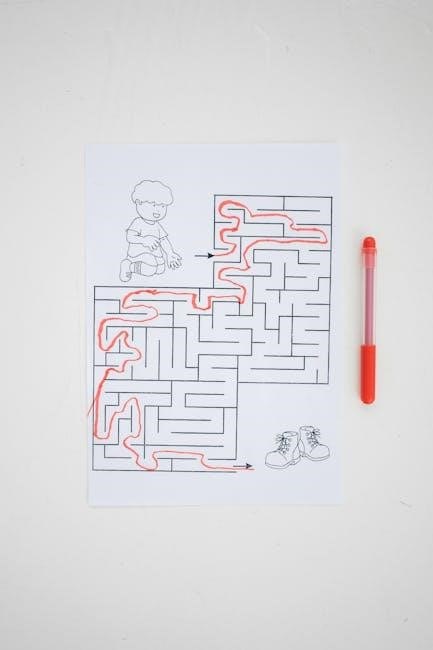Semicolons and colons are punctuation marks that can be tricky.
This section will provide an overview of these marks.
It will highlight their proper usage and key differences in sentences.
Mastering these marks enhances writing clarity and sophistication for everyone.
Semicolons: Definition and Usage
A semicolon connects related independent clauses not joined by a conjunction.
It indicates a closer relationship between clauses than a period does.
Semicolons can also separate items in a complex list when commas are present.
Use them carefully, ensuring logical connections and avoiding overuse.
Combining Independent Clauses with Semicolons
One of the primary uses of a semicolon is to join two independent clauses. These clauses must be closely related in meaning, so the semicolon creates a more cohesive sentence than using a period. Without a coordinating conjunction like “and,” “but,” or “or,” the semicolon effectively links the clauses. Consider this example: “The war is imminent; the armies are ready.”
The semicolon replaces the need for a conjunction, suggesting a direct relationship.
Ensure that each clause could stand alone as its own sentence. If they cannot, a semicolon isn’t suitable. Semicolons contribute to sentence variety and flow. However, use them sparingly to avoid overwhelming your writing.
Think of the semicolon as a bridge, connecting two related thoughts smoothly. Overuse can lead to choppy or confusing text. If the clauses are only loosely related, it is better to use separate sentences or rephrase.
Semicolons in Lists with Internal Punctuation
When creating lists where the items themselves contain commas, semicolons become essential for clarity. Instead of using commas to separate the list items, which could cause confusion, semicolons provide a clear distinction. This is particularly useful when listing locations, names with titles, or complex phrases. For instance, consider this list of attendees: “John Smith, CEO; Emily Johnson, CFO; David Lee, Marketing Director.”
Without semicolons, the commas within each name and title would make the list difficult to understand. Semicolons act as stronger separators, preventing ambiguity and improving readability. Using semicolons in such lists ensures that each item is easily identifiable as a distinct unit.
Remember, this usage is specifically for lists where internal commas are present. If the list items are simple and without internal punctuation, commas are generally sufficient. Proper use of semicolons enhances the organization and professional appearance of your writing, especially in formal documents.

Colons: Definition and Usage
Colons introduce elements like lists, explanations, or clarifications.
They signal that what follows expands on what precedes them.
Used correctly, colons enhance sentence structure and readability greatly.
They provide emphasis and structure to written communication today.
Introducing Lists with Colons
Colons are frequently used to introduce lists, and this is how we can use them properly.
A colon signals to the reader that a list of items will follow the independent clause before it;
This method creates a clear and organized structure within your sentences.
It is important to ensure that the part of the sentence before the colon is a complete thought, capable of standing alone.
For example, “I need to buy the following items:” is followed by a list of items.
The list that follows may consist of single words, phrases, or even full clauses, depending on the context of the sentence.
However, the colon serves as a visual cue, indicating that the listed items are directly related to the information presented before it today.
Using colons correctly in this way can greatly improve the clarity and readability of your writing, especially in situations that involve presenting a series of related items.
Using Colons for Explanation or Clarification
Colons are not only useful for introducing lists; they also serve a key role in providing explanations or offering clarifications.
When using a colon for this purpose, it typically follows an independent clause, much like in the case of introducing a list.
However, instead of a list, what follows the colon is an explanation or a more detailed description of the idea presented in the preceding clause today.
For instance, one might write: “The reason for the delay was simple: the train was running behind schedule.”
In this example, the colon connects the initial statement with the specific cause of the delay.
This usage helps to enhance the reader’s understanding by providing additional context or a deeper insight into the subject matter.
It’s also important to note that the explanation following the colon could be a single word, a phrase, or a complete sentence, depending on the level of detail required to provide the necessary clarity.
By using colons effectively in this manner, writers can create more informative and engaging content.
Colons in Titles and Subtitles
Colons are also frequently used in titles and subtitles to create a clear distinction between a broad topic and a more specific focus.
In this context, the colon acts as a bridge connecting a general subject to a particular aspect or angle being explored.
For example, a book title might be structured as “History of Rome: The Rise and Fall of an Empire.”
Here, “History of Rome” is the broad subject, while “The Rise and Fall of an Empire” specifies which part of Roman history the book will cover.
Subtitles, similarly, use colons to provide more detail about the content of a section or chapter.
This convention helps readers quickly understand the scope and direction of the material they are about to engage with.
It also allows writers to create titles that are both concise and informative, capturing the essence of their work while also providing a clear indication of its specific focus.
The use of colons in titles and subtitles is a common practice in academic writing, journalism, and creative writing.

Semicolons vs. Colons: Key Differences
Semicolons and colons, while both serving to connect elements within a sentence, have distinct roles.
The key difference lies in what they connect and the relationship they imply.
A semicolon is primarily used to link two independent clauses that are closely related in meaning.
Each clause could stand alone as a sentence, but the semicolon indicates a tighter connection than a period would.
In contrast, a colon is used to introduce an element or series of elements that explain, illustrate, or supplement the preceding clause.
It signals that what follows will provide further information or detail about what came before.
Think of a semicolon as creating a balanced connection between two equally important ideas.
Think of a colon as setting up an expectation for further explanation or specification.
Using the correct punctuation mark ensures clarity and precision in writing.
It is a vital element to professional writing.

Common Mistakes to Avoid
Avoid incorrect semicolon use with conjunctions.
Do not misuse colons after linking verbs.
These are common punctuation errors, but understanding the rules prevents mistakes.
Proper usage ensures clarity and enhances your written communication skills significantly.
Incorrect Use of Semicolons with Coordinating Conjunctions
One frequent error is combining independent clauses using a semicolon and a coordinating conjunction, such as “and,” “but,” or “or.”
This is generally incorrect; if you use a coordinating conjunction, a comma is typically sufficient.
A semicolon should be used to join independent clauses only when a coordinating conjunction is absent.
For instance, instead of writing, “I went to the store; but it was closed,” the correct form is “I went to the store, but it was closed.”
The semicolon becomes appropriate if the coordinating conjunction is removed: “I went to the store; it was closed.”
Understanding this distinction is crucial for proper semicolon usage.
Overusing semicolons with conjunctions can lead to awkward, grammatically incorrect sentences.
Remember, semicolons create a closer connection between clauses than periods but function differently than commas paired with conjunctions.
Always review your sentences to ensure you haven’t inadvertently combined these punctuation elements, maintaining clarity in your writing.
Mastering this rule will help you avoid a common yet easily correctable punctuation mistake.
Misusing Colons After Linking Verbs
A common mistake is placing a colon directly after a linking verb, such as “is,” “are,” “was,” or “were.”
Linking verbs connect the subject of a sentence to a noun or adjective that describes or renames it.
A colon should not interrupt this connection.
For example, it’s incorrect to write, “My favorite fruits are: apples, bananas, and oranges.”
The correct sentence would be, “My favorite fruits are apples, bananas, and oranges.”
Alternatively, you can restructure the sentence to properly use a colon: “My favorite fruits include the following: apples, bananas, and oranges.”
The colon introduces a list following an independent clause.
Identifying linking verbs and ensuring no colon immediately follows them will significantly improve your writing accuracy.
Avoid this error by carefully reviewing your sentences and understanding the function of linking verbs.
Remember, colons are used to introduce lists, explanations, or examples, but not to separate a subject from its complement via a linking verb.
Correcting this misuse will make your writing clearer and more grammatically sound.
Practice Exercises: Identifying Correct Usage
Sharpen your understanding with targeted practice exercises.
These exercises focus on differentiating between correct and incorrect uses of semicolons and colons.
You will encounter sentences where you must choose the appropriate punctuation.
Some sentences may require a semicolon to join related independent clauses.
Others might need a colon to introduce a list, explanation, or appositive.
Carefully analyze each sentence to determine the intended relationship between its parts.
Pay close attention to whether the clauses are independent and closely related.
Also, consider if a list or clarification follows an independent clause.
These exercises include common errors to help you recognize and avoid them.
Work through each example, applying the rules and guidelines discussed earlier.
Challenge yourself to identify the correct punctuation in various contexts.
This hands-on practice will solidify your knowledge and boost your confidence.
Regular practice is essential for mastering the nuances of semicolon and colon usage.
These exercises are designed to improve your writing skills and accuracy.
Worksheet Resources: PDF Availability and Content
Enhance your learning with our readily available PDF worksheets.
These worksheets are designed to provide comprehensive practice on semicolon and colon usage.
You can easily download and print these resources for convenient study.
Each worksheet contains a variety of exercises to reinforce your understanding.
The content includes identifying correct punctuation and correcting errors.
Exercises cover combining independent clauses with semicolons and introducing lists with colons.
You will also find tasks focused on using colons for explanations and clarifications.
Some worksheets feature fill-in-the-blank questions to test your knowledge.
Others present sentences that require you to add the correct punctuation mark.
These worksheets are suitable for both individual study and classroom use.
Teachers can use them to supplement their lessons and assess student progress;
The PDF format ensures easy accessibility and compatibility across devices.
Worksheets often include sections for writing your own sentences using semicolons and colons.
This creative application of the rules helps solidify your understanding.
Download the PDF worksheets to start practicing and improving your punctuation skills today.

Answer Keys and Explanations: Understanding Correct Solutions
To aid your learning journey, comprehensive answer keys accompany each worksheet.
These answer keys are crucial for verifying your work and identifying areas of improvement.
Beyond simply providing the correct answers, detailed explanations are included.
These explanations break down the reasoning behind each correct solution.
Understanding why a particular punctuation mark is appropriate is essential for mastery.
The explanations cover the specific rules and guidelines related to semicolons and colons.
For example, the answer key clarifies when a semicolon is used to join independent clauses.
It also explains when a colon is used to introduce a list or provide clarification.
Common mistakes are addressed, helping you avoid similar errors in the future.
The answer keys often provide alternative correct answers, showcasing flexibility in punctuation.
By reviewing the answer keys, you gain a deeper understanding of the nuances involved.
The explanations also highlight the relationship between different parts of the sentence.
This helps you see how punctuation contributes to the overall meaning and flow.
Use the answer keys as a valuable resource for self-assessment and targeted learning.
By analyzing your mistakes and understanding the correct solutions, your skills will improve.

